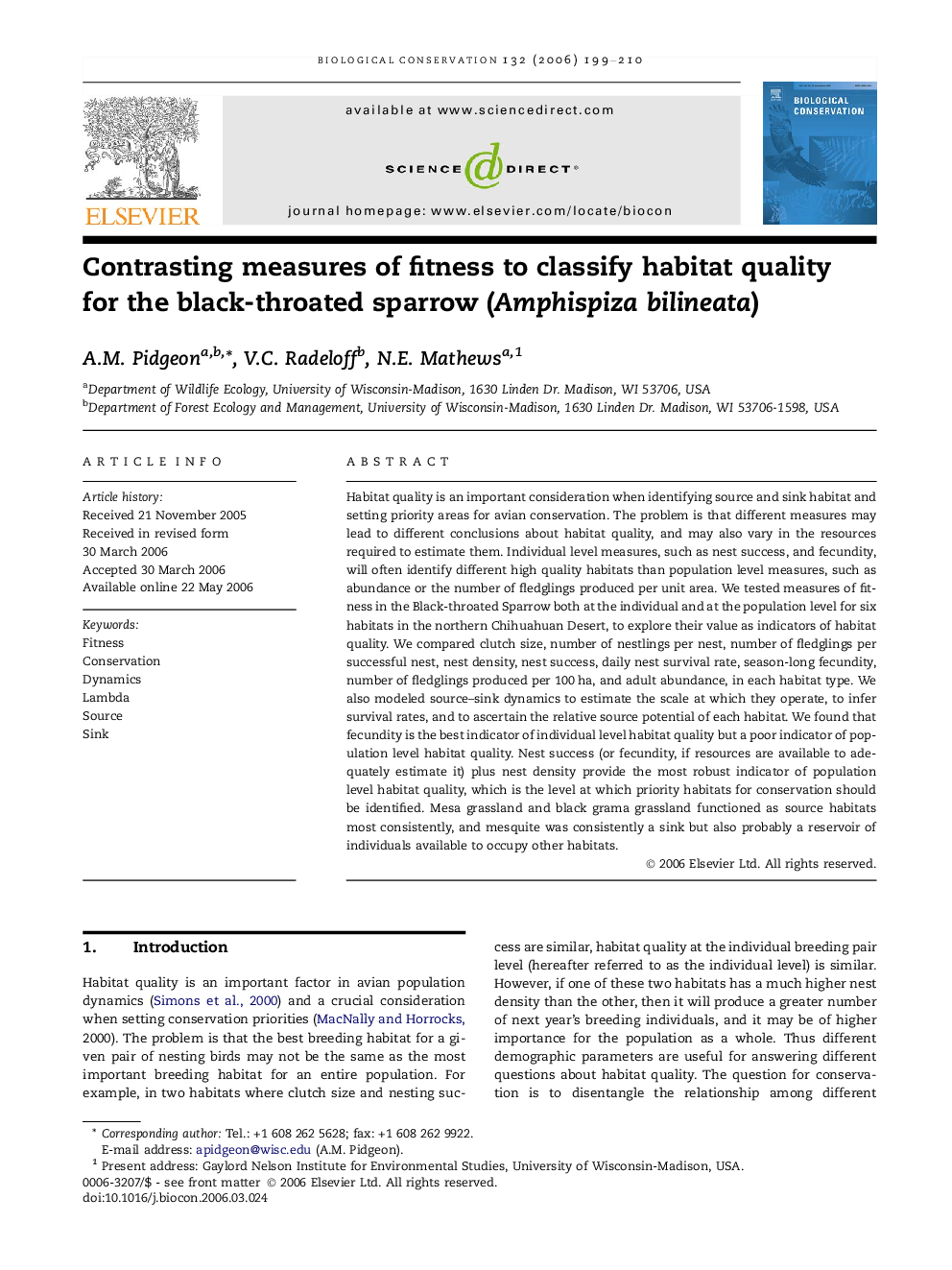| Article ID | Journal | Published Year | Pages | File Type |
|---|---|---|---|---|
| 4387389 | Biological Conservation | 2006 | 12 Pages |
Abstract
Habitat quality is an important consideration when identifying source and sink habitat and setting priority areas for avian conservation. The problem is that different measures may lead to different conclusions about habitat quality, and may also vary in the resources required to estimate them. Individual level measures, such as nest success, and fecundity, will often identify different high quality habitats than population level measures, such as abundance or the number of fledglings produced per unit area. We tested measures of fitness in the Black-throated Sparrow both at the individual and at the population level for six habitats in the northern Chihuahuan Desert, to explore their value as indicators of habitat quality. We compared clutch size, number of nestlings per nest, number of fledglings per successful nest, nest density, nest success, daily nest survival rate, season-long fecundity, number of fledglings produced per 100Â ha, and adult abundance, in each habitat type. We also modeled source-sink dynamics to estimate the scale at which they operate, to infer survival rates, and to ascertain the relative source potential of each habitat. We found that fecundity is the best indicator of individual level habitat quality but a poor indicator of population level habitat quality. Nest success (or fecundity, if resources are available to adequately estimate it) plus nest density provide the most robust indicator of population level habitat quality, which is the level at which priority habitats for conservation should be identified. Mesa grassland and black grama grassland functioned as source habitats most consistently, and mesquite was consistently a sink but also probably a reservoir of individuals available to occupy other habitats.
Related Topics
Life Sciences
Agricultural and Biological Sciences
Ecology, Evolution, Behavior and Systematics
Authors
A.M. Pidgeon, V.C. Radeloff, N.E. Mathews,
